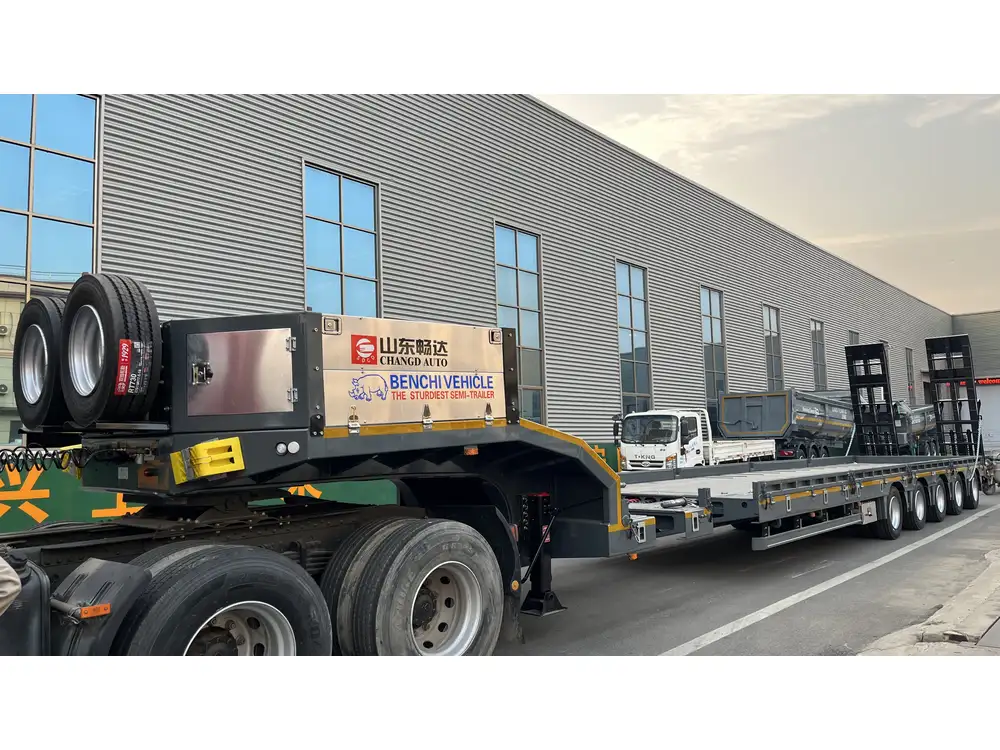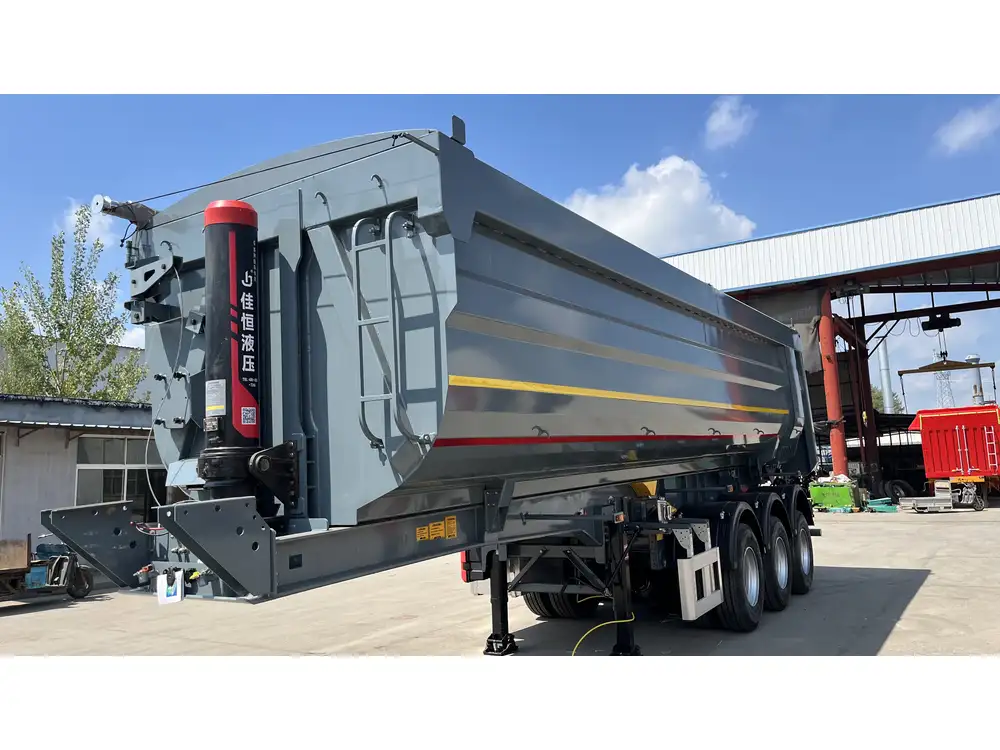Side dump trailers are an essential asset in the hauling industry, particularly for transporting loose materials such as gravel, asphalt, and dirt. While these specialized trailers provide unparalleled efficiency and versatility, they are not immune to issues that may hinder performance. Understanding how to troubleshoot common problems can extend the life of your equipment and keep your operations running smoothly. In this guide, we will explore potential issues, diagnostic steps, and remedies for maintaining optimal functionality in your side dump trailer.
Common Issues and Diagnostics
To effectively troubleshoot a side dump trailer, it’s crucial to understand the various components involved and the potential issues that may arise. Here, we break down common problems by systems within the trailer.
Hydraulic System Failures
The hydraulic system is pivotal for a side dump trailer’s operation. Any malfunction within this system can lead to severe performance issues.

Signs of Hydraulic Issues:
- Inconsistent Dumping: The trailer does not tip or unload material consistently.
- Noise: Unusual hissing or grinding sounds during operation.
- Fluid Leaks: Visible oil spots under the trailer.
- Slow Response: Delays in trailer dump response time.
Troubleshooting Steps:
Check Hydraulic Fluid Levels:
- Ensure the reservoir is filled to the recommended level.
- Inspect for contamination; murky fluid indicates the need for a change.
Inspect Hoses and Fittings:
- Look for cracks, wear, or loose connections.
- Tighten loose fittings or replace damaged hoses immediately.
Examine the Pump:
- Listen for unusual sounds; check for leaks around the pump seal.
- Test pressure output using a gauge; compare with specifications.
Test the Control Valves:
- Operate the control lever and look for proper actuator movements.
- Clean or replace any clogged valves that impede flow.
Electrical System Glitches
Electrical failures can lead to improper operation and require careful scrutiny.

Signs of Electrical Issues:
- Non-Functioning Lights: Trailer lights fail to illuminate.
- Erratic Dump Behavior: Random or uncommanded dumping.
- Dead Battery Issues: Frequent battery failures indicate potential wiring issues.
Troubleshooting Steps:
Inspect Wiring Harness:
- Check for fraying or exposed wires.
- Ensure all connections are secure and free from corrosion.
Test the Battery:
- Ensure the battery is charged and terminals are clean.
- Use a multimeter to check voltage and rectification.
Examine Fuses and Relays:
- Replace any blown fuses and test relays for functionality.
- Keep a diagram of electrical circuits for reference.
Structural Frame Concerns
The integrity of the trailer’s frame is essential for safe operation and load carriage.

Signs of Frame Issues:
- Visible Cracks: Inspect for fractures or bent components.
- Unstable Load Distribution: Noticeable sway or tilting during operation.
- Excessive Wear: Abrasion or stress marks on welds and joints.
Troubleshooting Steps:
Conduct a Visual Inspection:
- Look for signs of rust or corrosion.
- Check for misalignment of the frame due to impacts.
Test for Structural Integrity:
- Use a level to assess the trailer’s balance.
- Perform load testing to verify strength under operational conditions.
Repair Damage Immediately:
- Weld any cracked sections and sand down rust spots.
- Apply protective coatings to prevent future corrosion.
Suspension System Problems
A malfunctioning suspension system can lead to handling issues and uneven tire wear.

Signs of Suspension Issues:
- Bumpy Ride: Noticeable vibrations or instability while in transit.
- Uneven Tire Wear: Tires show signs of excessive wear on one side.
- Knocking Noises: Sounds from the suspension components during movement.
Troubleshooting Steps:
Inspect Leaf Springs and Shocks:
- Check for fractures or corrosion on leaf springs.
- Test shock absorbers for leaks or diminished responsiveness.
Check Axle Alignment:
- Use a measuring tape to verify that axles are adequately aligned.
- Adjust as needed to prevent tire wearing and handling issues.
Examine Wheel Bearings:
- Inspect for excess play or noise during rotation.
- Grease and adjust as necessary to maintain smooth operation.
Preventive Maintenance Tips
Regular maintenance is key to preventing issues from developing into serious problems.

Create a Regular Maintenance Schedule
Implement a systematic maintenance schedule that addresses:
- Daily Walk-Around Inspections: Check for leaks, wear, and visible issues before operation.
- Weekly Fluid Checks: Monitor hydraulic fluid and other essential fluids regularly.
- Monthly Thorough Inspections: Conduct detailed assessments of all systems, including structural checks and electrical components.
Keep a Maintenance Log
Document all maintenance activities, including:
- Date of service
- Types of inspections performed
- Esoteric notes on repairs or parts replacements
This log not only aids in identifying recurring issues but also helps in maintaining warranties and compliance.
Invest in Quality Parts
Utilize high-quality OEM (Original Equipment Manufacturer) parts for repairs and replacements. Although they may come at a premium, they tend to be more durable and reliable than aftermarket options.

Train Your Operators
Proper training in the use of a side dump trailer can prevent user-induced problems. Educate operators about:
- Load limits and safe transport practices.
- The significance of proper hydraulic operation.
- Pre-trip and post-trip inspection routines.
Additional Resources
Should further issues arise, having access to supplemental resources can be of great benefit:
- Manufacturer Manuals: Always refer to the specific owner’s manual for troubleshooting and maintenance recommendations tailored to your model.
- Online Forums and Communities: Engage in discussions with other side dump trailer operators to glean insights and common troubleshooting tactics.
- Local Repair Services: Familiarize yourself with local professionals who specialize in trailer repair, ensuring quick assistance when major issues occur.
Conclusion
Troubleshooting a side dump trailer requires vigilance, a structured approach, and awareness of common issues that can arise within its operational systems. With the insights offered in this guide, we hope to illuminate the path to effectively diagnosing and remedying problems that may impede your operations. Regular maintenance and acute awareness of your equipment will not only prolong the life of your side dump trailer but also optimize your workflow efficiency. Remember that a well-maintained trailer is not just a functional asset; it is a key player in ensuring your business’s success in the competitive hauling industry.



